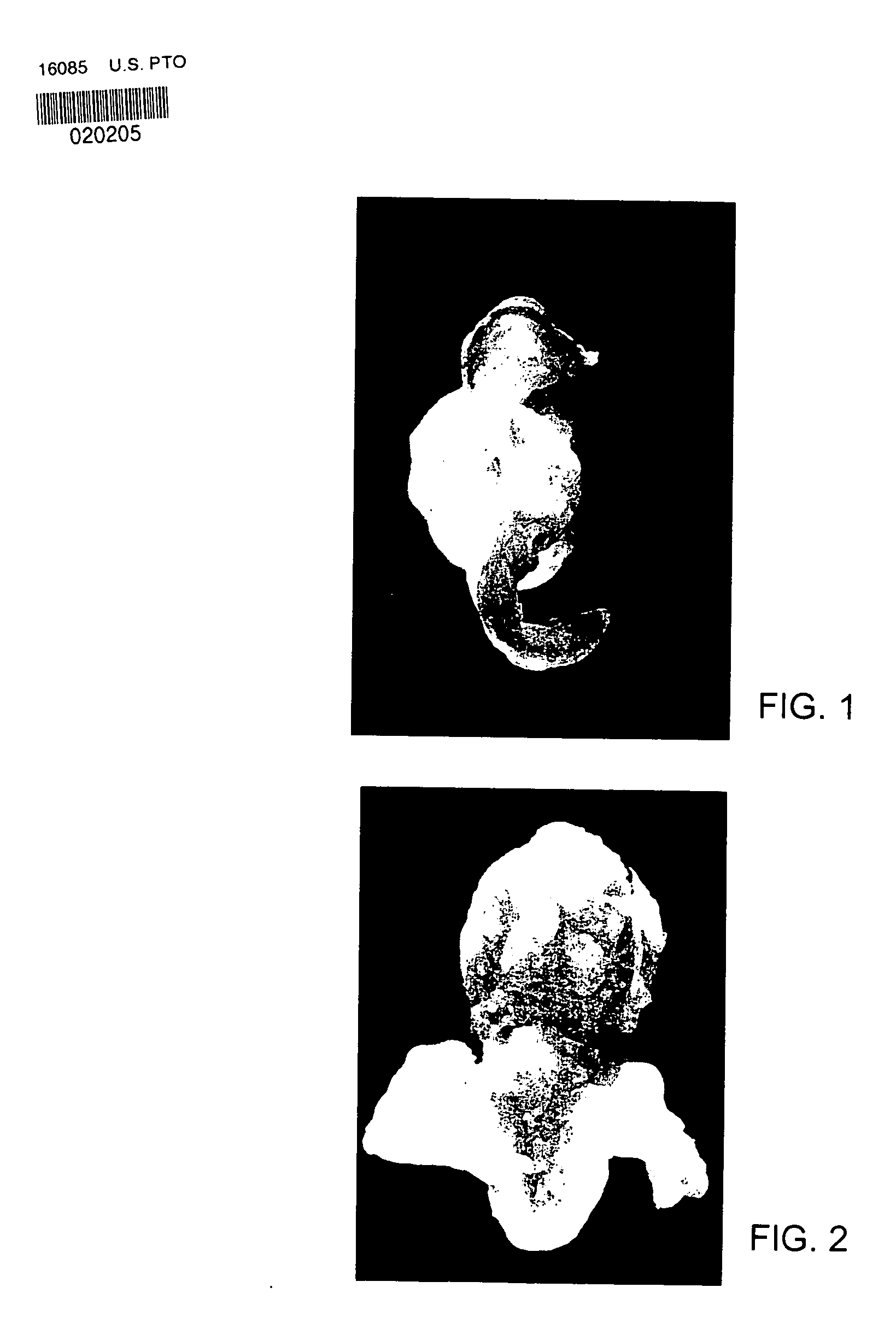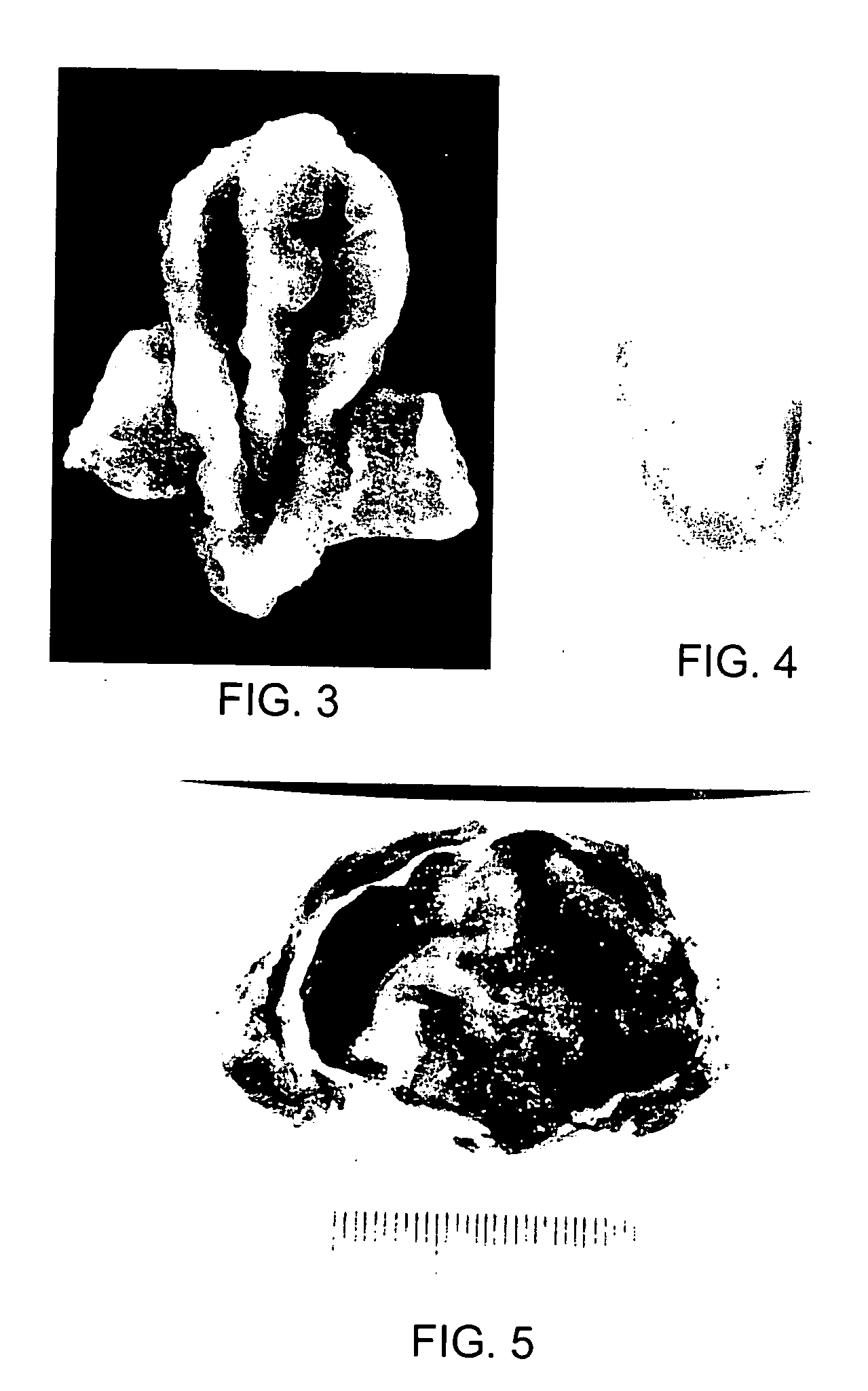In vitro culture of tissue structures
a tissue structure and culture technology, applied in the field of reconstructive surgery, can solve the problems of limited tissue availability, donor site morbidity, and dissimilarity of donor tissu
- Summary
- Abstract
- Description
- Claims
- Application Information
AI Technical Summary
Benefits of technology
Problems solved by technology
Method used
Image
Examples
Embodiment Construction
[0019] The invention provides a method for growing a tissue structure in vitro by seeding a scaffold with tissue precursor cells, such as chondrocytes. To grow a body part (tissue construct), a scaffold having a desired shape, for example the shape of an external ear or a nasal tip cartilage (alar, septal and upper lateral), is created by placing a biodegradable and / or non-biodegradable material into a mold. For example, one can place a mixture of 100 micron-thick sheets of polyglycolic acid (PGA) fibers and poly-L-lactic acid (hereafter referred to as “PLLA”) into silicone molds having the desired shape. For auricular tissue constructs and other constructs that require some rigidity, a non-biodegradable material, such as acrylic sheets, can be embedded into the biodegradable material, e.g., PGA fibers. A suitable source of PGA fibers is Davis & Geck, of Danbury, Conn. Suitable acrylic sheets are available from Alcon Research, of Fort Worth, Tex.
[0020] The idea is to have any scaff...
PUM
 Login to View More
Login to View More Abstract
Description
Claims
Application Information
 Login to View More
Login to View More - R&D
- Intellectual Property
- Life Sciences
- Materials
- Tech Scout
- Unparalleled Data Quality
- Higher Quality Content
- 60% Fewer Hallucinations
Browse by: Latest US Patents, China's latest patents, Technical Efficacy Thesaurus, Application Domain, Technology Topic, Popular Technical Reports.
© 2025 PatSnap. All rights reserved.Legal|Privacy policy|Modern Slavery Act Transparency Statement|Sitemap|About US| Contact US: help@patsnap.com


